Blog
Enriching children’s experiences with intergenerational contact from their neighbourhoods
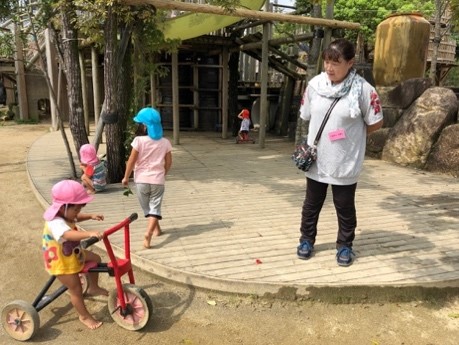
“Outdoor environments of early childhood care and education (ECEC) settings have the potential of bringing young children in touch with their neighbourhoods. If designed with this function in mind these can also become spaces of intergenerational play and learning”.
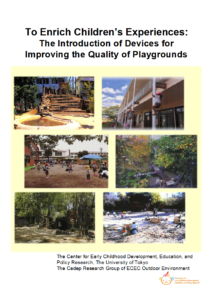
This was one of the findings of a research study undertaken by the Center for Early Childhood Development, Education and Policy (CEDEP) at the University of Tokyo. 1740 ECEC centers have participated in the study which has been running since 2016.
Read more below about some examples of the intergenerational contact that was observed.
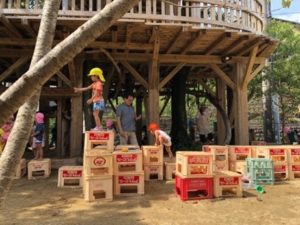
One center invites children’s grandparents twice a year, when they have the chance to witness their grandchildren enjoy challenging and risky forms of play such as climbing and jumping. This kind of play is not usual to see indoors or indeed at home. Grandparents delight in seeing new possibilities for their grandchildren’s growth and development. Sometimes the they even join in the challenging play with their grandchildren like trying to cross a wooden bridge.
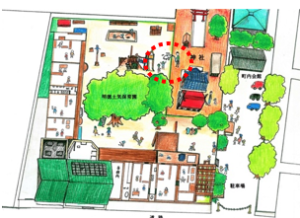 Outdoor playgrounds are often spaces that older neighbors can see and if invited, join in and participate in activities. Opening up an ECEC center to the neighborhood triggers new forms of communication and collaboration across generations. In the Meitoku-toke Daycare – shown in the pictures here -, older adults who take care of the plants in a small shrine, which is believed as a guardian deity of neighbor people and located next to playground, invite staff and children to help out in caring for it. The cultivation of the plants for the shrine and its care becomes a shared activity involving all generations. A very welcome happening in the shrine on very hot summer days is the water spray directed towards the playing children as the older adults water the plants.
Outdoor playgrounds are often spaces that older neighbors can see and if invited, join in and participate in activities. Opening up an ECEC center to the neighborhood triggers new forms of communication and collaboration across generations. In the Meitoku-toke Daycare – shown in the pictures here -, older adults who take care of the plants in a small shrine, which is believed as a guardian deity of neighbor people and located next to playground, invite staff and children to help out in caring for it. The cultivation of the plants for the shrine and its care becomes a shared activity involving all generations. A very welcome happening in the shrine on very hot summer days is the water spray directed towards the playing children as the older adults water the plants.
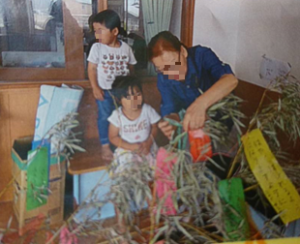
In Japan, there are various annual traditional ceremonies that were followed locally or in each family. The making of such ceremonies is another opportunity for young and old to come together in the natural outdoor space of the ECEC centre. One such event is the traditional Tanabata ceremony which people pray for stars each year in July. The celebration involves writing down personal wishes for the future on paper which is tied to bamboo.
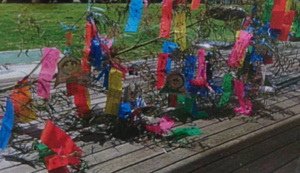
This ECEC centre had no bamboo tree of its own and so the older people living close by offered to help by bringing their home grown bamboo together. Then the children, older people, and ECEC staffs prepare for the ceremony together. Such ceremonies are often held in ECEC centres, since they can be chances for children to feel comfortable and excited with and learn how to make eagerly from older generations.
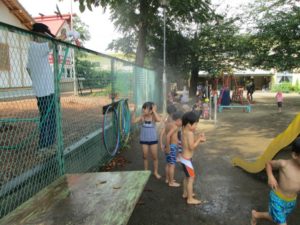
The CEDEP research team plan to continue exploring these forms of intergenerational interaction outdoors so that more children and older people in Japan benefit. If you would like to read more about their practice guidelines for designing good quality outdoor environments, click here.